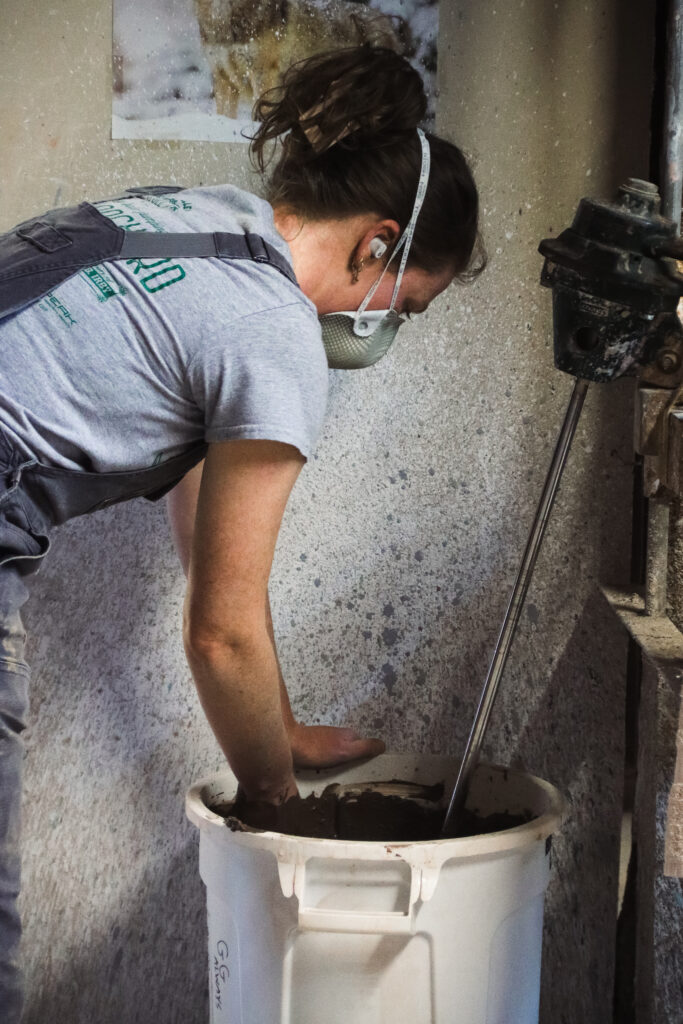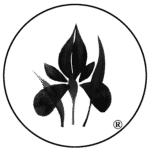Emerson Creek Pottery History
Functional Art Today & Always
1970s
Emerson Creek was founded by two Potters in Uxbridge, Massachusetts, in the early ’70s at their historic home, which was called Emerson House — named after the family of Ralph Waldo Emerson. Emerson Creek Pottery’s namesake is the creek that ran by Emerson House.
We built our first kiln in New England, which was wood-fired, and relocated it piece-by-piece to Virginia in 1977.
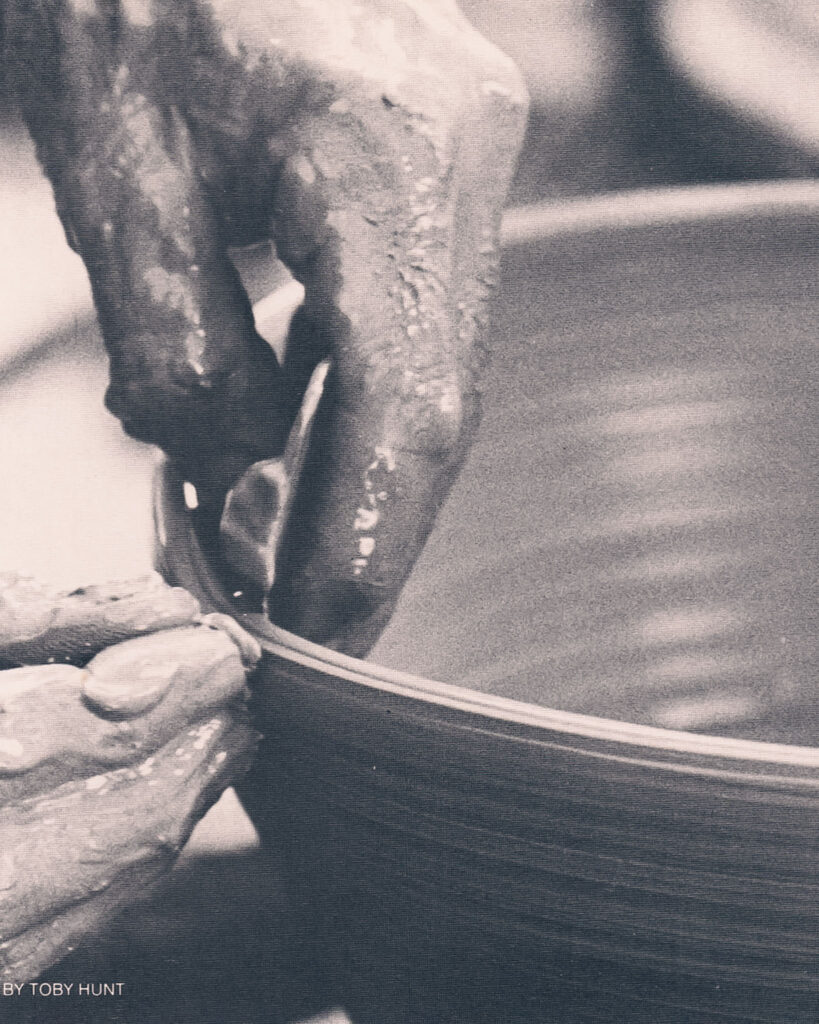
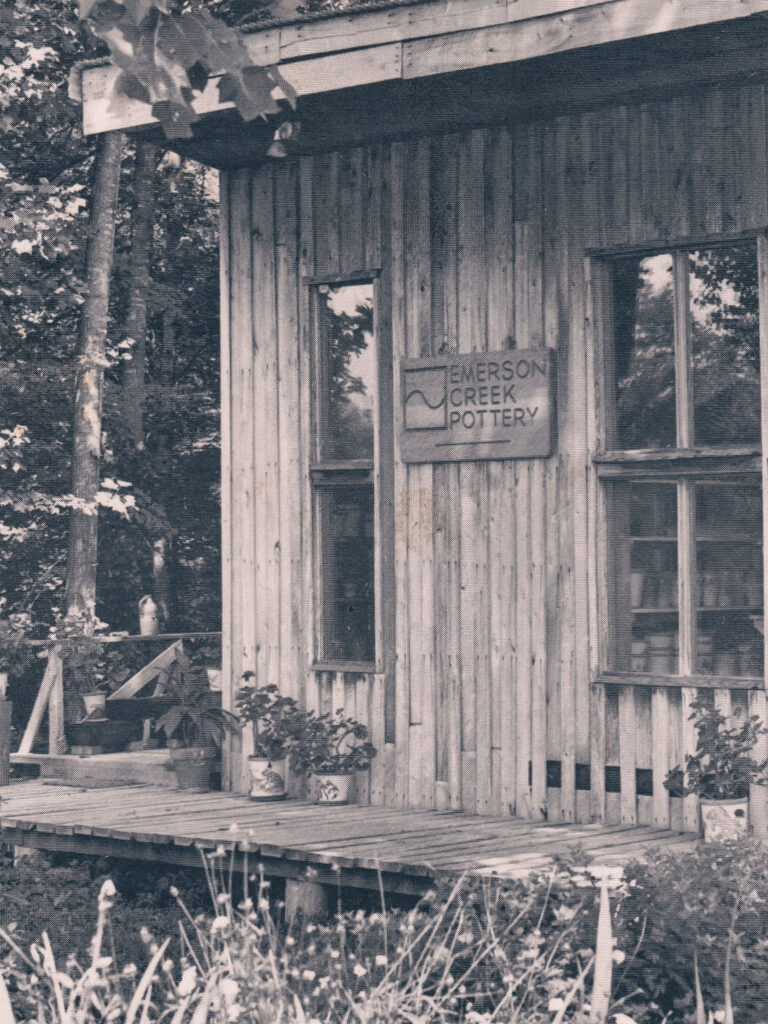
1977
In 1977, the potters moved to Bedford County, Virginia, and built their first studio, a wood-timbered building, on the historic Wade family property. This studio is the heart of our modern campus and is still in use today.
The original historic home is now our Retail Outlet Store and is one of the oldest existing log cabins in the county, with the first section dating back to 1825.
Our first products were thrown by hand and reduction fired. We started off with stoneware pitchers, vases, coffee mugs, and jugs.
1980s
By the ’80s, the Emerson Creek team had grown to include several full-time potters. All of our pieces were still hand-thrown, and we started to gain traction in the art world. We sold products out of our studio space and frequented craft fairs. Around this time, we started working with a sales rep who helped wholesale our products, leading to a big break we call the “Flowerpot Boom.”
In the early ’80s, we also retired our original wood kiln and switched to a gas kiln for a while before settling on electric kilns.
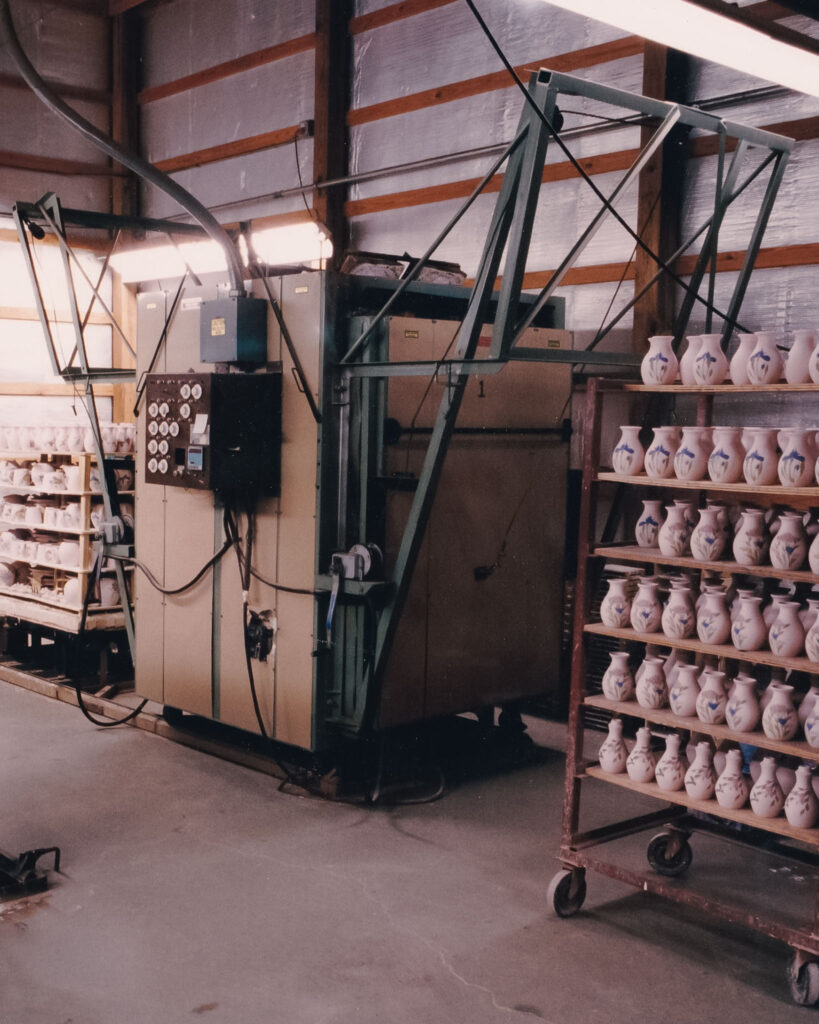
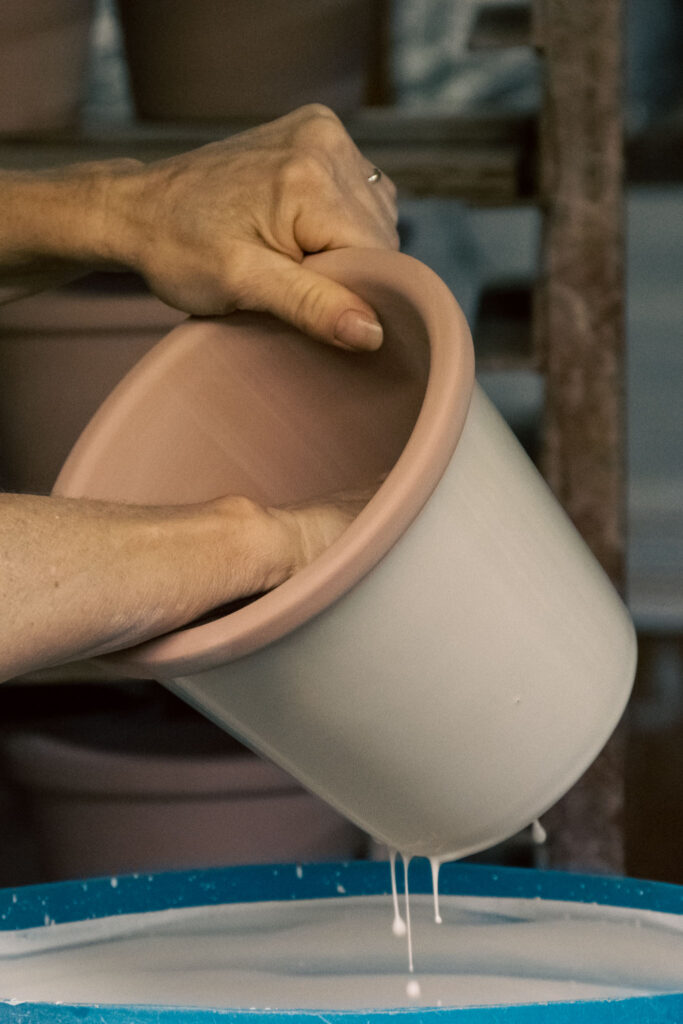
The "Flowerpot Boom"
In the early ’80s, our botanical-inspired earthenware flowerpots took the pottery world by storm. Our flower pots were made from red earthenware clay and decorated with a distinctive majolica technique — a white base glaze adorned with colorful botanicals. This technique influenced much of our work throughout the ’80s and ’90s and made its way into our entire product line, including dinnerware, vases, pitchers, and soap dispensers.
Our flowerpots proved to be one of our best sellers, and we couldn’t throw enough pots to keep up with the demand. This led to the introduction of the RAM press into our process, a piece of machinery that presses clay into molded shapes.
Late 1980s
After the addition of the RAM press, we used it to craft some vessels and continued to throw others like mugs and jugs. By the late ’80s, we decided to try slip casting for some of our more detailed pieces — mostly items with handles and spouts like mugs and vases.
We built out a slip casting room, including all of the plaster molds, to start casting some of our products. This slip casting room is still in use today, and it’s where we pour all of our mugs, teapots, pitchers, bathroom sets, and vases.
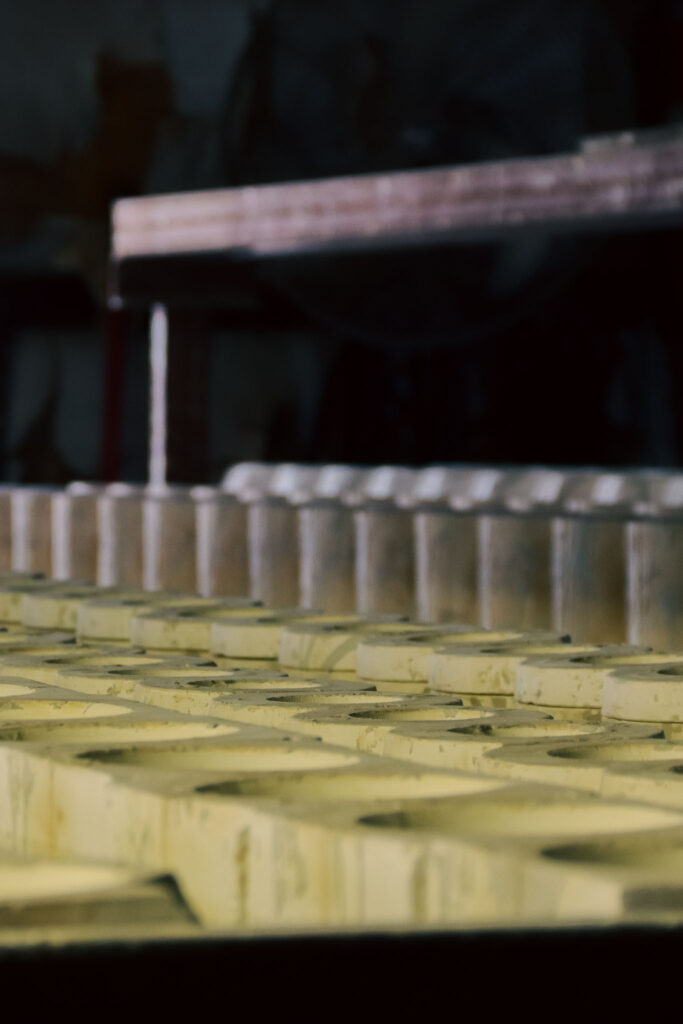
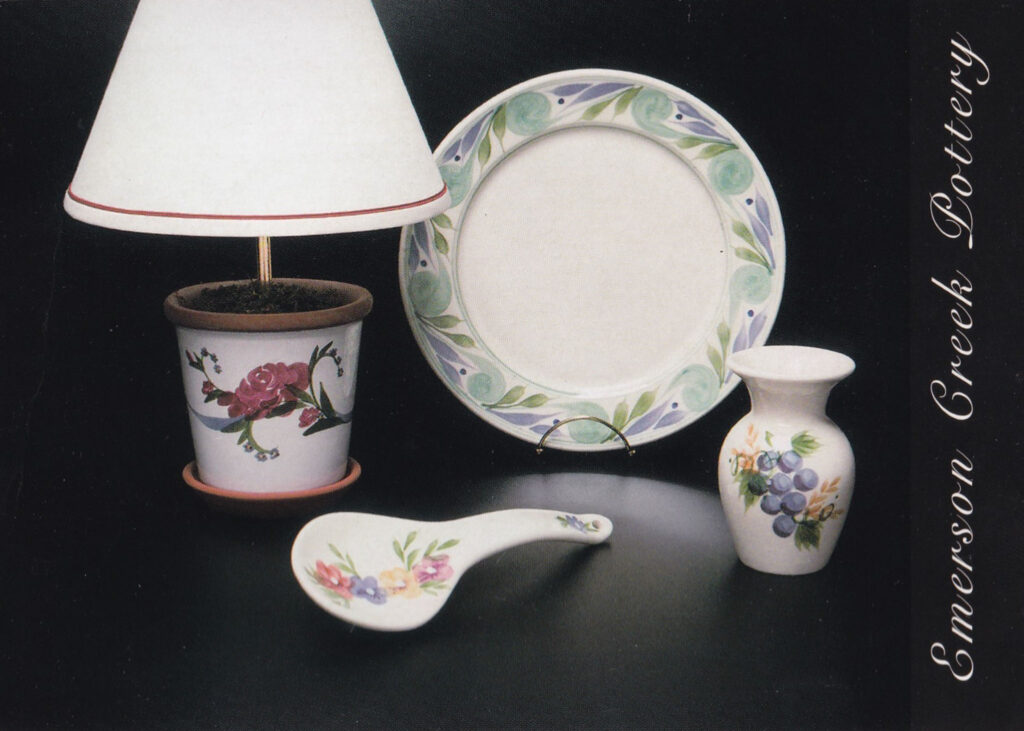
1990s
In the ’90s, we began selling at giftware shows and broke into the retail world. We had four retail stores in Virginia: two in Roanoke, one in Lynchburg, and one on our Bedford campus.
One of our Roanoke stores was located in Roanoke’s Historic City Market area and featured three floors of shopping space, 14-foot tin ceilings, glass walls, and floral murals. All but one storefront closed before the turn of the century.
1992
In ’92, we made one of our biggest purchases ever, a gas kiln manufactured in Stoke-on-Trent, England, the former pottery manufacturing capital of the world. This kiln resides in our warehouse and has been in constant use for 30 years now. Purchasing this kiln, which is roughly the size of a shipping container, allowed us to fire larger loads, drastically increasing efficiency.
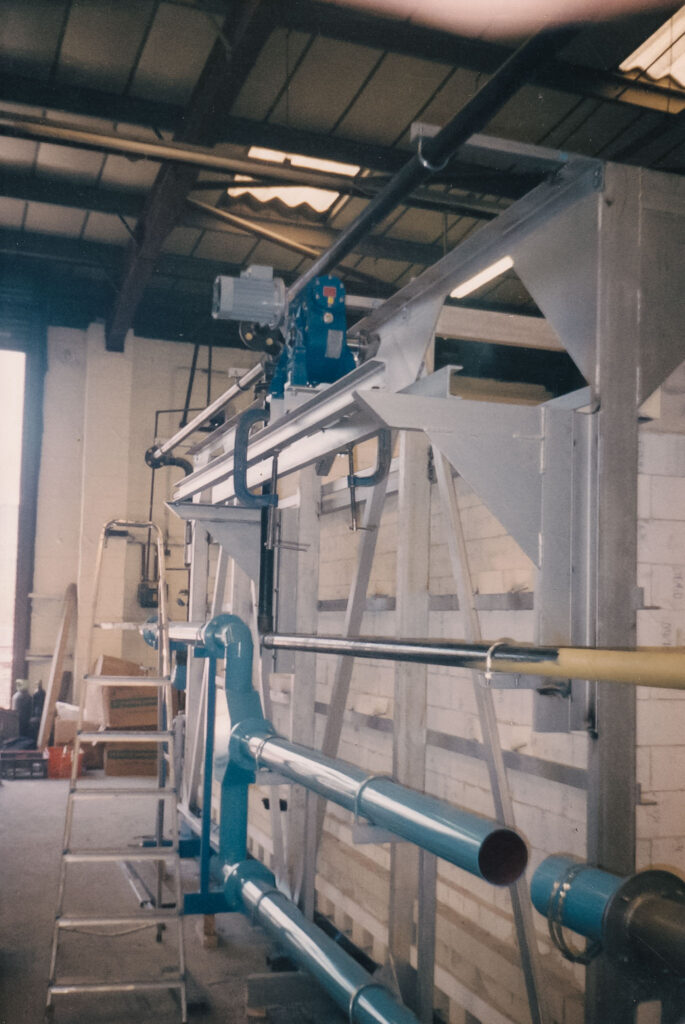
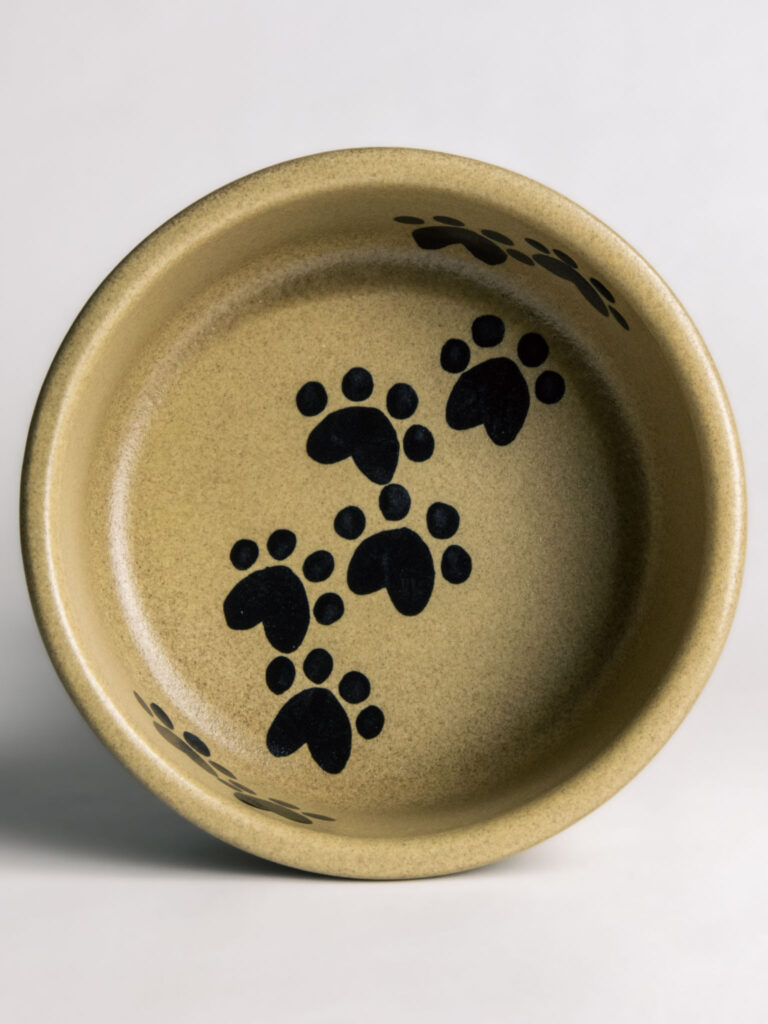
Mid-1990s
In the mid-90s, we introduced pet bowls to our product line. We used a jiggering wheel to make our first pet dishes, which combines a traditional pottery wheel with a form to mold clay into a shape. We now use a RAM press to make pet dishes.
Late 1990s
By the late ’90s, we started to phase out our red earthenware clay and transition back to a stoneware clay body. Over the years, we learned that earthenware clay was more brittle than stoneware, leading to more cracks and leaks than its stoneware counterpart. By the early 2000s, red earthenware was completely phased out.
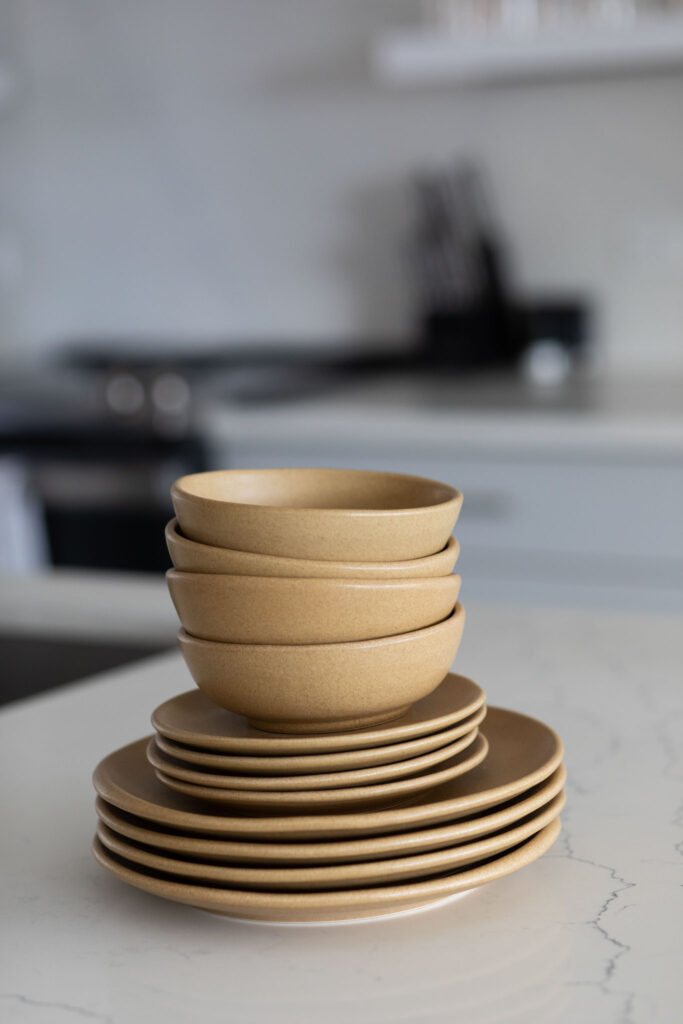

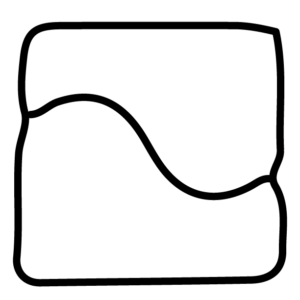
2000s
In the early 2000s, we updated our logo from the original Emerson Creek logo, a square with a curved line representing the mountains and a creek, to an iris. Through several iterations, we still use the iris logo today, which was inspired by one of our very first and most-beloved hand-painted designs, Field of Iris.
2010s
For nearly 20 years, Emerson Creek had been manufacturing cookie stamps and shortbread pans under contract for Brown Bag Designs, an artisan bakeware company. In 2015, we purchased Brown Bag Designs, and it is now a wholly-owned subsidiary of Emerson Creek Pottery.

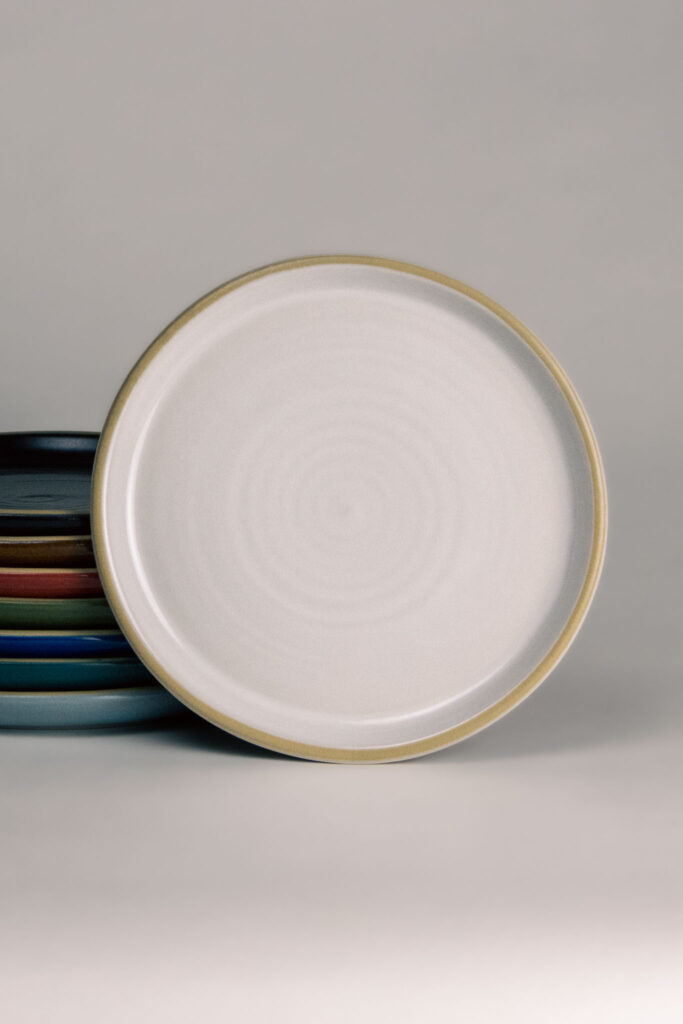
2020s
After focusing exclusively on our hand-painted designs for over 40 years, we decided to branch out and design a modern dinnerware collection that hearkened back to our early days. This new collection called Brookline featured hand-thrown lines and exposed clay rims, similar to our dinnerware from the ’80s.
Present Day
2022 marks 45 years of Emerson Creek Pottery. The business is still owned and operated by one of our original potters and his children, who are learning and looking to the future as the next generation of Emerson Creek.
